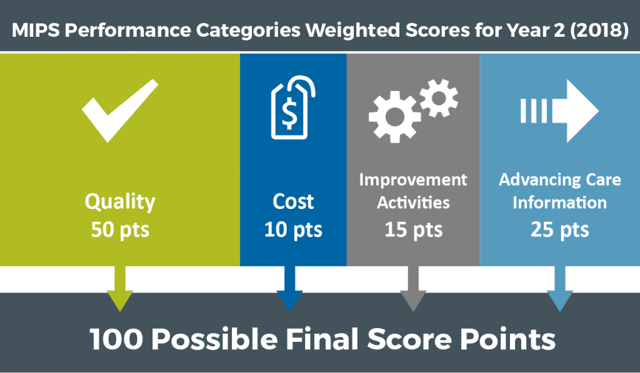What vRad’s Sale Will Mean for Radiologists and Clients
Our practice is for sale. And frankly, I’m pretty excited about it. Based on past experiences, the sale of vRad bodes well for the future of our...

Remote radiologist jobs with flexible schedules, equitable pay, and the most advanced reading platform. Discover teleradiology at vRad.

Radiologist well-being matters. Explore how vRad takes action to prevent burnout with expert-led, confidential support through our partnership with VITAL WorkLife. Helping radiologists thrive.

Visit the vRad Blog for radiologist experiences at vRad, career resources, and more.

vRad provides radiology residents and fellows free radiology education resources for ABR boards, noon lectures, and CME.

Teleradiology services leader since 2001. See how vRad AI is helping deliver faster, higher-quality care for 50,000+ critical patients each year.

Subspecialist care for the women in your community. 48-hour screenings. 1-hour diagnostics. Comprehensive compliance and inspection support.

vRad’s stroke protocol auto-assigns stroke cases to the top of all available radiologists’ worklists, with requirements to be read next.

vRad’s unique teleradiology workflow for trauma studies delivers consistently fast turnaround times—even during periods of high volume.

vRad’s Operations Center is the central hub that ensures imaging studies and communications are handled efficiently and swiftly.

vRad is delivering faster radiology turnaround times for 40,000+ critical patients annually, using four unique strategies, including AI.
.jpg?width=1024&height=576&name=vRad-High-Quality-Patient-Care-1024x576%20(1).jpg)
vRad is developing and using AI to improve radiology quality assurance and reduce medical malpractice risk.

Now you can power your practice with the same fully integrated technology and support ecosystem we use. The vRad Platform.

Since developing and launching our first model in 2015, vRad has been at the forefront of AI in radiology.

Since 2010, vRad Radiology Education has provided high-quality radiology CME. Open to all radiologists, these 15-minute online modules are a convenient way to stay up to date on practical radiology topics.

Join vRad’s annual spring CME conference featuring top speakers and practical radiology topics.

vRad provides radiology residents and fellows free radiology education resources for ABR boards, noon lectures, and CME.

Academically oriented radiologists love practicing at vRad too. Check out the research published by vRad radiologists and team members.

Learn how vRad revolutionized radiology and has been at the forefront of innovation since 2001.

%20(2).jpg?width=1008&height=755&name=Copy%20of%20Mega%20Nav%20Images%202025%20(1008%20x%20755%20px)%20(2).jpg)

Visit the vRad blog for radiologist experiences at vRad, career resources, and more.


Explore our practice’s reading platform, breast imaging program, AI, and more. Plus, hear from vRad radiologists about what it’s like to practice at vRad.

Ready to be part of something meaningful? Explore team member careers at vRad.
3 min read
 Sharon Roeder, BA, CPC
:
January 30, 2018
Sharon Roeder, BA, CPC
:
January 30, 2018

With the transition from year one (2017) to year two (2018) in the Merit-based Incentive Payment System (MIPS), there are several noteworthy changes to the program:
MIPS: Comparing CY 2017 to CY 2018
| POLICY TOPIC | TRANSITION YEAR 1 (Final Rule CY 2017) |
YEAR 2 (Final Rule CY 2018) |
| Exemption for Newly-enrolled in Medicare | • Clinicians enrolled in Medicare for the first time during the performance period are exempt until the following performance years. | • No change |
| Low-volume threshold exemption criteria | • Excluded if you or your group has ≤$30,000 in Part B allowed charges
or • ≤100 Part B beneficiaries |
Increased threshold:
• Excluded if you or your group has ≤$90,000 in Part B allowed charges or • ≤200 Part B beneficiaries |
| Non-patient Facing | • Individual - If you have ≤100 patient facing encounters (Identified by billed E&M and surgical and procedural codes).
• Groups that have > 75% of their NPIs billing under the group’s TIN during a performance period labeled as non-patient facing. |
• Individual (no change)
• Group (no change) • Virtual Groups have same definition as groups. |
There are also changes to the weighted scoring system:

While many radiology practices were not participants in the MIPS precursor Physician Quality Reporting System (PQRS), an increasing number are exploring the pros and cons of enrollment in MIPS. With potential incentives and penalties as high as 9 percent of Medicare reimbursements, the financial risks and rewards are certainly significant.
Others have taken notice, at least in part, because they anticipate a healthcare culture in which savvy patients choose providers with the aid of Centers for Medicare & Medicaid Services (CMS) Physician Compare website. This website is designed to help consumers make informed choices about the health care they receive through Medicare.
With this increased interest in MIPS, I’m frequently asked for my recommendation for practices with regard to the program. While there’s no blanket yes or no answer to the question of whether MIPS is right for you, here are my three best recommendations for any practice weighing its options.
Develop a MIPS leadership team or task force. Bring people together from several areas of your practice, everyone from physicians and practice managers to IT leaders and coders.
The team’s first task should simply be to determine if and how your practice will participate in the program.
The CMS has some very helpful tools on their website to help practices determine if they qualify for the program and what benefits they may derive.
The CMS help desk is also very responsive to email and phone questions.
With the help of CMS resources, your organization’s MIPS team can address questions at the core of the MIPS opportunity.
Does participation make sense for your size practice? What measures should you report? Which measures best fit your unique patient population? Does it make sense to report as individual physicians or as a physician team, reporting an average group score?
Even if your decision is to decline participation in MIPS, keep your team together to perform at least annual reviews of the program as it and your practice evolves.
For practices that decide to participate in MIPS, it’s vital that your MIPS team continually evaluates the effectiveness of your practice’s efforts.
If, for example, physicians aren’t receiving feedback on their efforts, they won’t be able to improve or focus their efforts on important quality measures.
If you’ve identified challenges or shortcomings, a cross-functional MIPS team can address them from many different angles. Simple education opportunities may be enough to tackle some challenges.
Others may require an investment in time and resources. For instance, are there ways IT can help automate some of your processes to remind physicians about reporting requirements or best practices?
As with any program aimed at facilitating improvement, MIPS needs to remain top-of-mind to everyone who influences your practice’s performance.
That goes well beyond your MIPS team.
It’s critical that everyone in your organization knows what’s at stake when it comes to the program. And they need to understand their role in pursuing the practice’s MIPS goals.
And while you will surely share news of goals and challenges related to MIPS, don’t forget to also take time to celebrate the successes and milestones in your MIPS journey.
Recorded January 24th, 2018 | Survive Year 2 of the Quality Payment Program – Tips and Tools to Thrive
Recorded January 31st, 2018 | Survive 2018 Coding and Medicare Payment Policy Updates for Radiology – Tips and Tools to Thrive
Back to Blog.png)
Our practice is for sale. And frankly, I’m pretty excited about it. Based on past experiences, the sale of vRad bodes well for the future of our...

The demand for imaging studies is expected to continue to increase for the foreseeable future. However, the number of radiologists on hand to perform...

I love to watch the colors change in October, when pink is in full display during Breast Cancer Awareness month. With each hot-pink scarf, T-shirt...
vRad (Virtual Radiologic) is a national radiology practice combining clinical excellence with cutting-edge technology development. Each year, we bring exceptional radiology care to millions of patients and empower healthcare providers with technology-driven solutions.
Non-Clinical Inquiries (Total Free):
800.737.0610
Outside U.S.:
011.1.952.595.1111
3600 Minnesota Drive, Suite 800
Edina, MN 55435